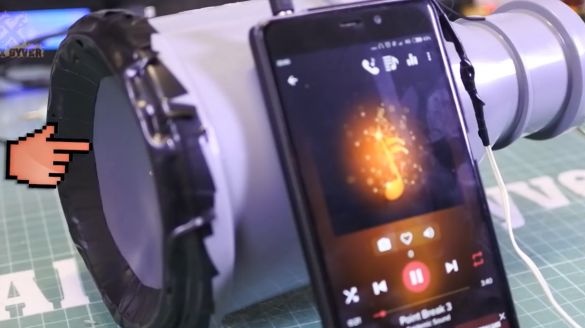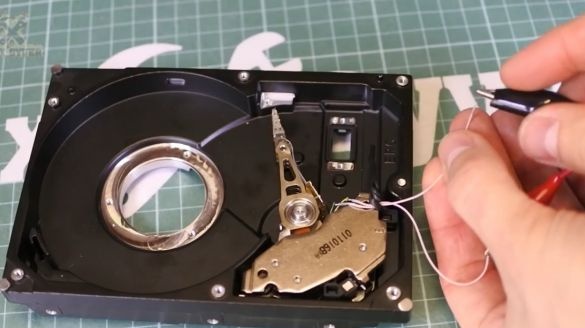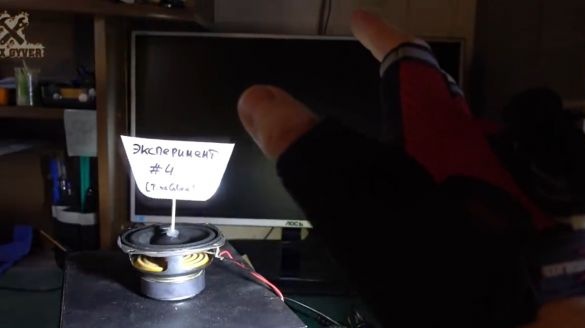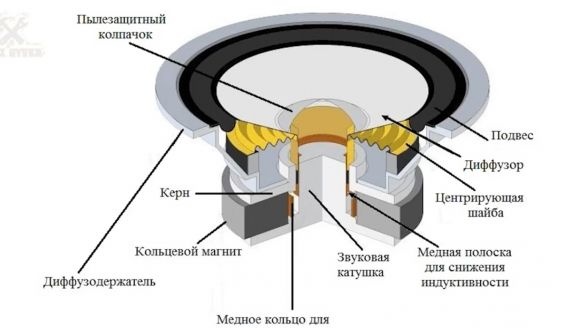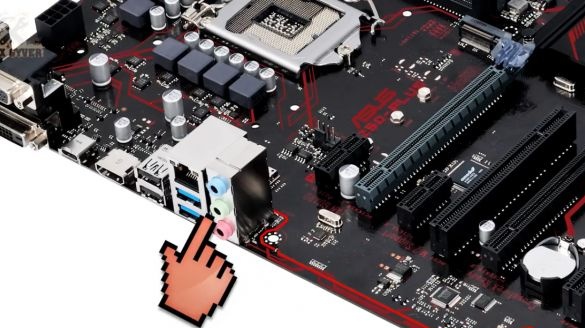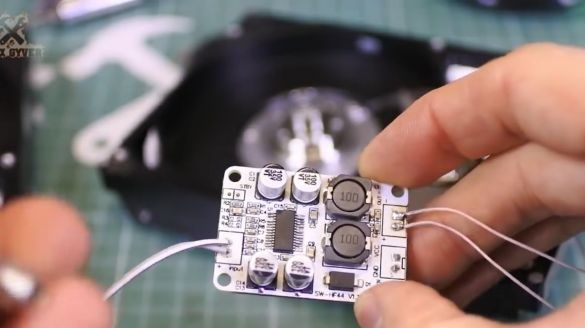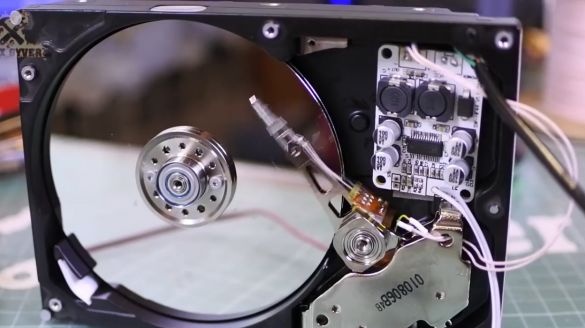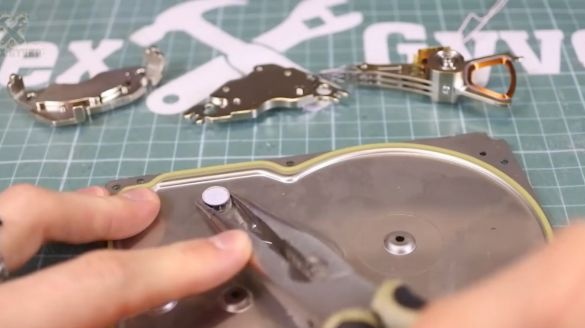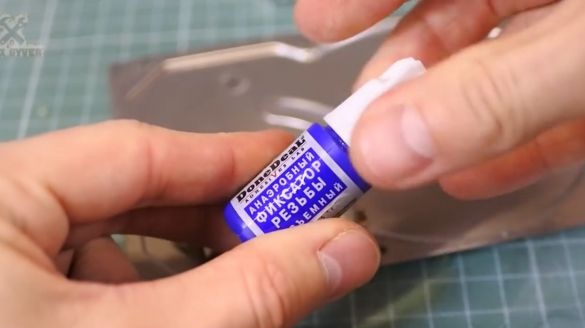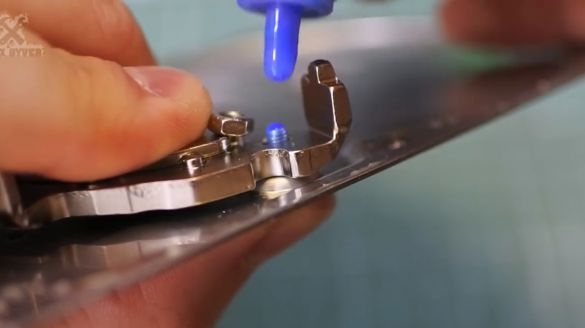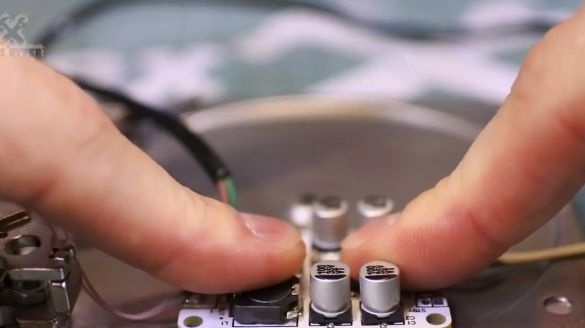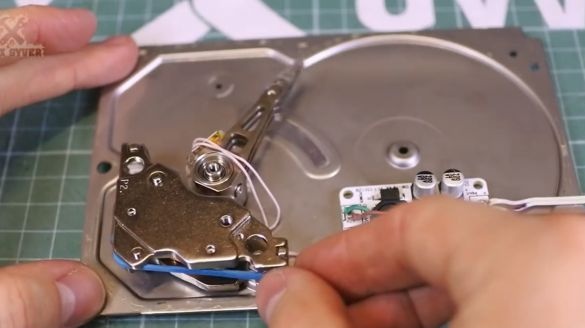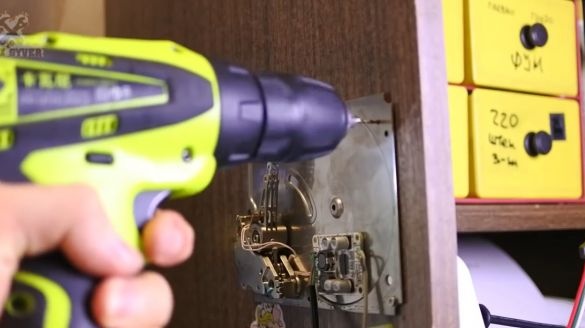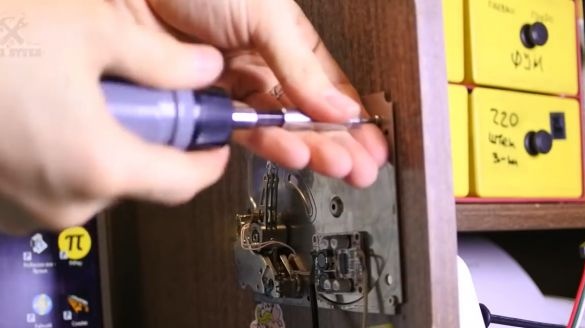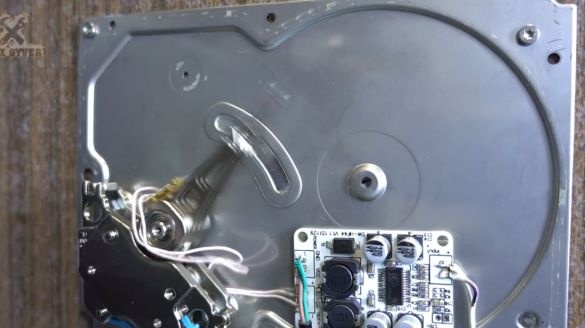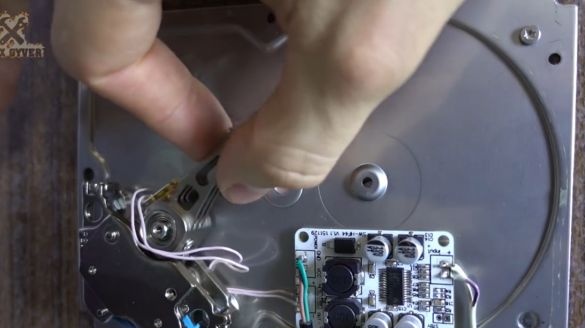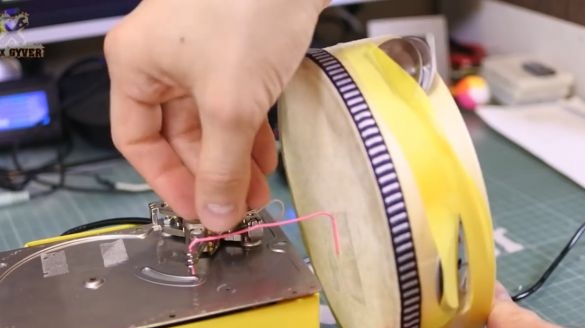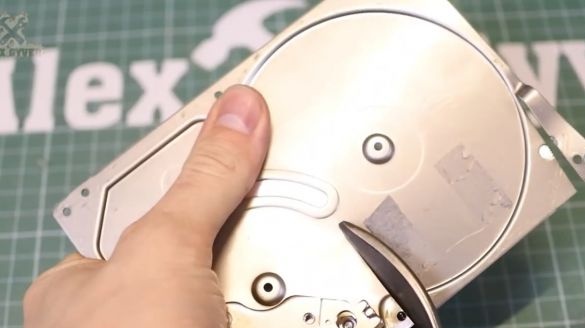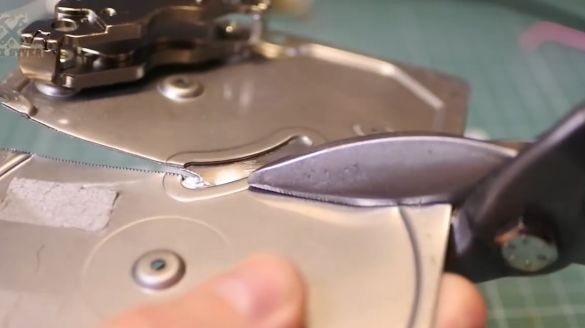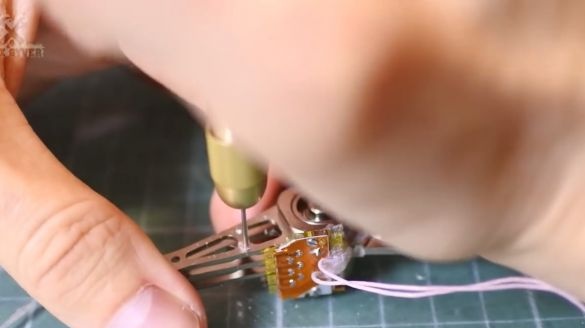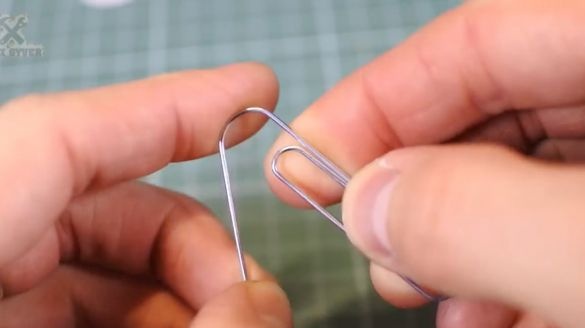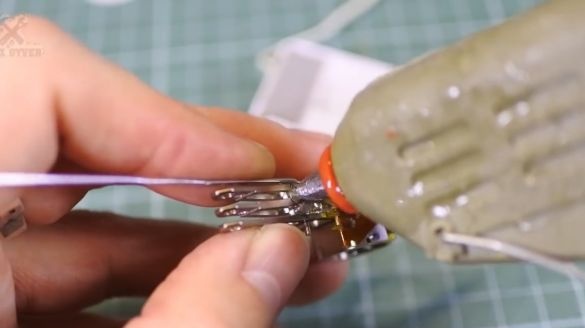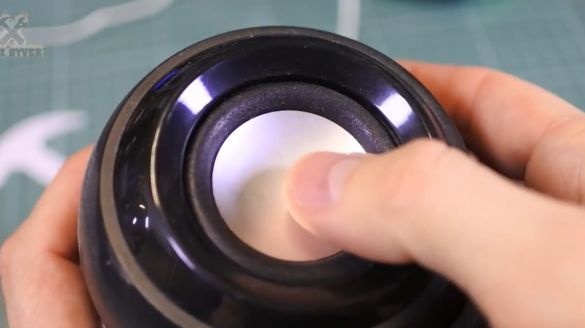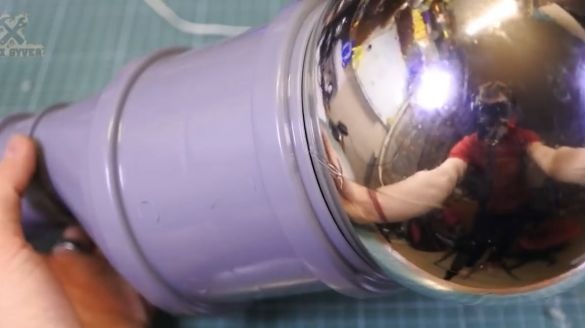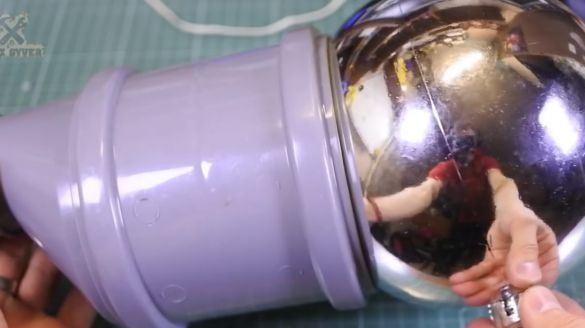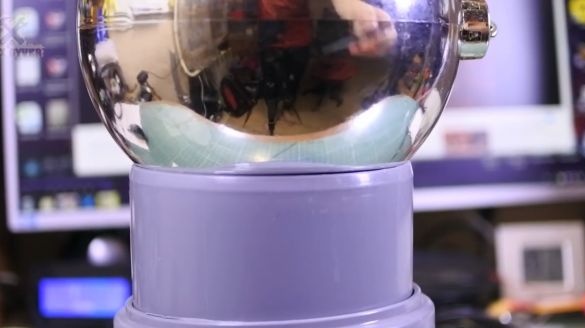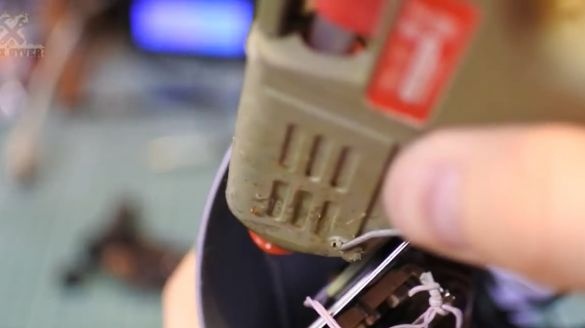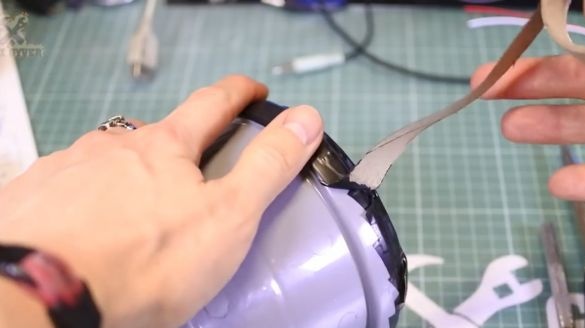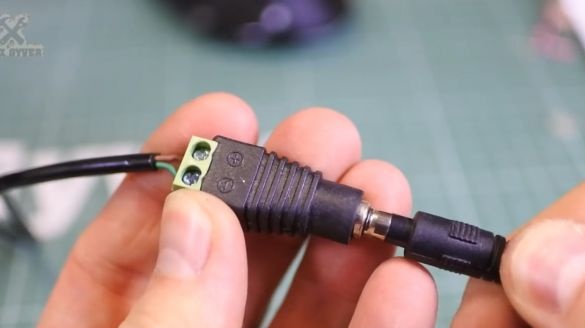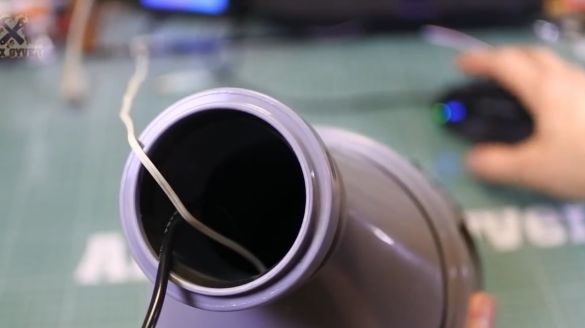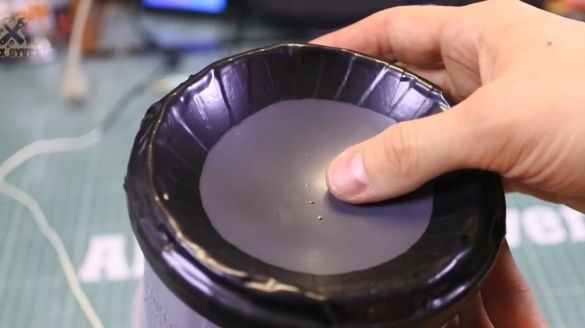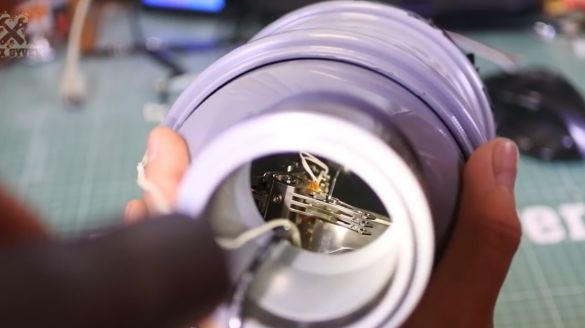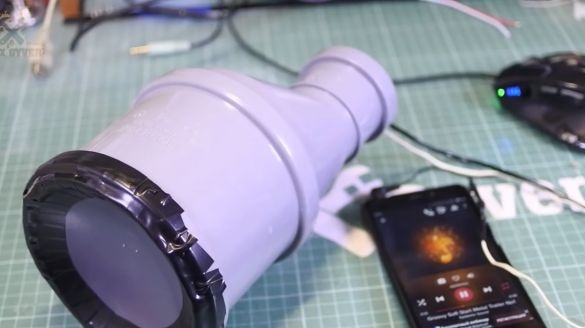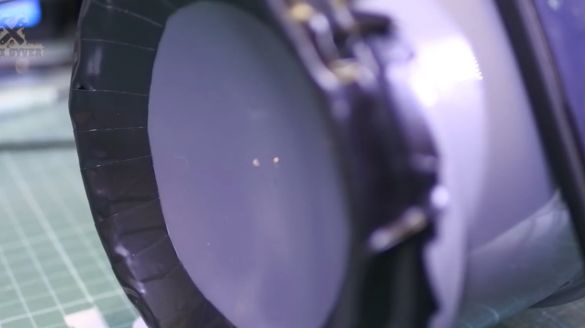Today we will be engaged in the manufacture of the most real speaker. And the dynamics are not simple, but vibratory.
If you suddenly decided to listen to music, and you didn’t have any acoustics in your vicinity, then the problem can be solved with the help of affordable materials and tools.
Necessary materials and tools:
1. Old (broken) PC hard drive
2. Soldering iron
3. Wires
4. Audio amplifier
5. Office gum
6. Cogs m3
7. Thread lock (superglue can also be used)
8. Sewer fittings
9. Paper clip
10. Christmas ball (rather large diameter)
11. Hot glue and thermal gun
12. Electrical tape
Of course, you should not really rely on the fact that such a speaker is capable of fully replacing music speakers. We get something like a small subwoofer.
Poking around in a box with spare parts from various hard drives, the author of the video came up with one very interesting thing that you will learn about today from this article.
The read head of the hard drive is driven by electromagnetic forces thanks to a frame with current, which is located between two very powerful rare earth magnets.
The author unsoldered the wires that lead directly to the coil and extended them with thin, soft wires. If voltage is now applied to the coil, the system will move. And she does it very vigorously. And the author had several ideas how to use it, for example, he is thinking of making a pinball. But let's do it sometime later.
We all know that the sound that is in the wire is also a voltage. Moreover, the voltage is variable.
An ordinary speaker, which stands in the column, translates this voltage into vibration, and we hear a sound, that is, air vibration. So in the dynamics, and in the drive of the head of the hard drive there is a coil and there are permanent magnets. So why not try making the drive play music.
The author pulled out a magnetic stop, which fixes the head in the extreme position.The audio signal from the computer’s sound card is rather weak. He will not be able to swing his head. Accordingly, the signal needs to be amplified. The author uses a Chinese amplifier for this. A socket for audio input from a computer is connected to it, 12 V power is supplied, and the amplified sound output is connected directly to the drive coil of the hard drive head.
And what do you think, she actually plays music. And hell does it pretty well. But you can hear the head rattling on the discs. The author decided to remove the discs, and the sound became much quieter. The case also clearly interferes, something needs to be done with this. The author pulled out all the components and decided to fix them on the cover from the hard drive case. We will mount on the screws and nuts m3.
It will be very correct to use a thread lock or just super glue. Otherwise, the connections can unwind from vibration and everything just falls apart.
We put the second magnet very carefully, otherwise you can pinch your finger. Well, actually we fix the head on its native screw.
The author secured the amplifier to double-sided tape.
We try, the music plays, but at high volume the frame begins to beat against the body.
The solution was the usual gum. What is happening now is very similar to a vibrating speaker. That is, our home-made speaker does not have a membrane, and it plays due to micro-loops and vibration of the entire structure, in particular the vibration of the sheet of the housing cover itself.
Friends, if you think this is a fake, then I congratulate you, and I suggest buying a hard drive at a flea market for 100 rubles, disassembling it, and connecting the head to the wires from the amplifier to the speaker. And you yourself will see for yourself.
And as in the case of a vibrodynamic speaker, this system can use any large flat thing as its membrane, for example, a cabinet wall.
Well, the sound has become much louder and deeper. Let's fix our speaker to its native cogs.
The head from the hard drive attached to the cabinet plays jazz. And it plays quite well. But drum and bass hurts her. Dub step probably should not even be included. And of course, a metal thing should play metal. The author added a little hard rock.
All of this is great, of course, but the system eats almost 10 watts, and it plays very quietly, because we spend almost all the energy on swinging the head. Namely, God forbid 1% of energy goes into sound. To get more sound, you need to remove vibrations from the head of the hard drive and transfer them directly to the diffuser. For example, like this:
And it’s even more correct to do this:
I propose not to stop there and make a real full-fledged low-frequency speaker out of the hard drive, that is, a subwoofer.
As the body of the subwoofer, we will use sewer fittings. It turned out that the adapter sleeve from the 110th pipe is simply perfect in size for the hard drive case cover.
So we cut off the excess and drill holes for the connecting rod.
The connecting rod itself will be made of a large metal paper clip. For depreciation, add hot glue, a smooth clip will not stick to it, but it will not rattle in the hole.
The author wants to make the diaphragm the same as for such computer speakers:
In the form of a sphere segment. To do this, the housing must be extended with a 110 to 110 clutch and take a giant Christmas ball as a diffuser.
We fix the connecting rod on two wire ties (again filled with hot glue), because we need the connecting rod to rotate, but not to hang in the hole, otherwise it will rattle.
We fix the plate with the head on hot glue from all four sides.
The diffuser should be attached to the body with something soft that will move, wrinkle and not make noise. Something like rubber. And the author decided that black electrical tape is perfect for this purpose. The electrical tape is glued to the diffuser so that there are no gaps.
The system is assembled, glued and finally fastened with electrical tape. And the electrical tape ends.
Well, okay. This is such a thing.
We connect.
Well friends, it really does play. And he plays several times louder even at half volume from an experiment with a cabinet wall. To assess the sound quality, I recommend that you watch the author’s original video (link at the end of the article).
But unfortunately, the camera cannot tell you everything the way the author heard it. The sound of course is a real underground. Deaf and very bass. In general, this is how a home-made low-frequency speaker from a santech and a hard disk should sound.
With this homemade product, the author wanted to show how unconventionally at first glance it is possible to use absolutely incompatible things with each other, combining them together and getting something third in general.
Thank you for attention. See you soon!
Video:

